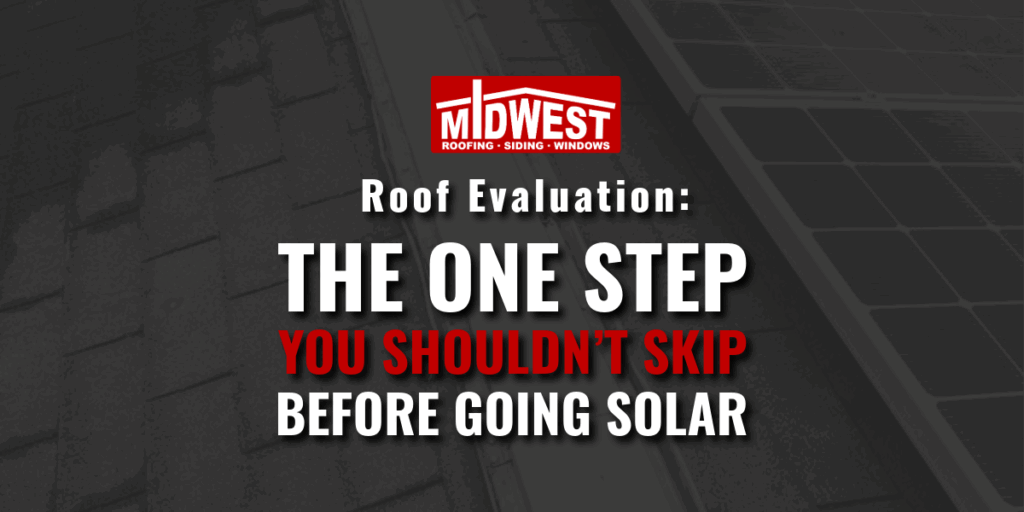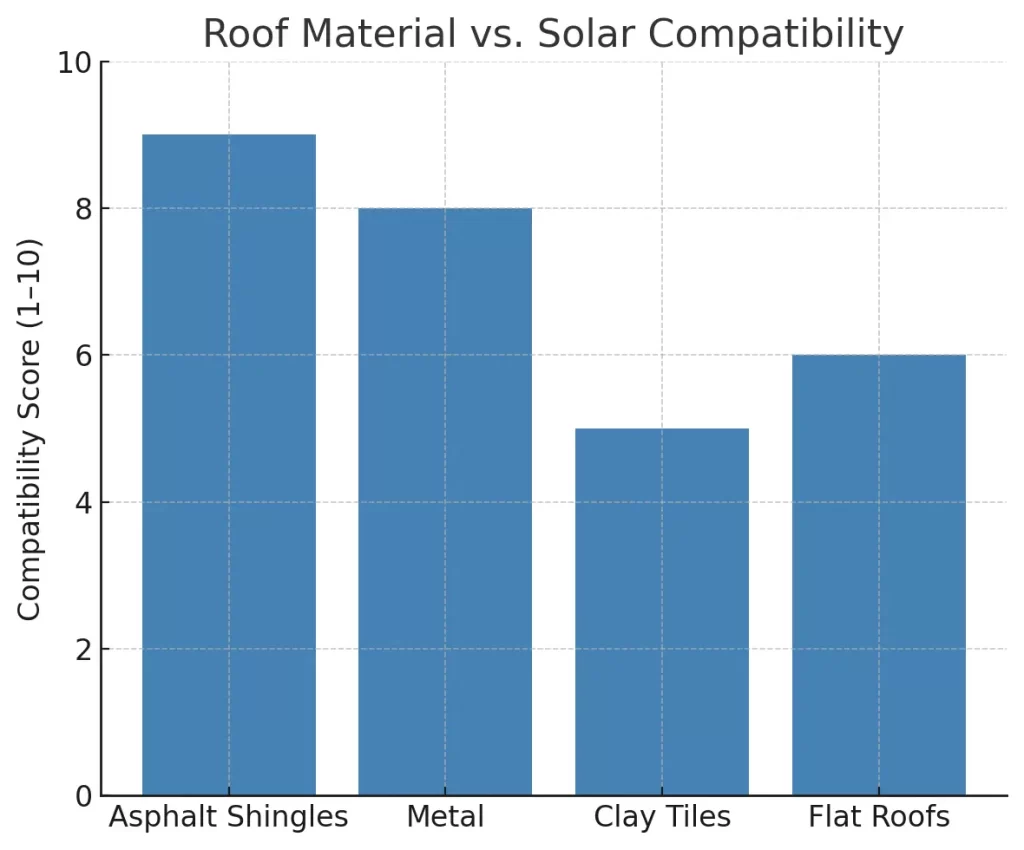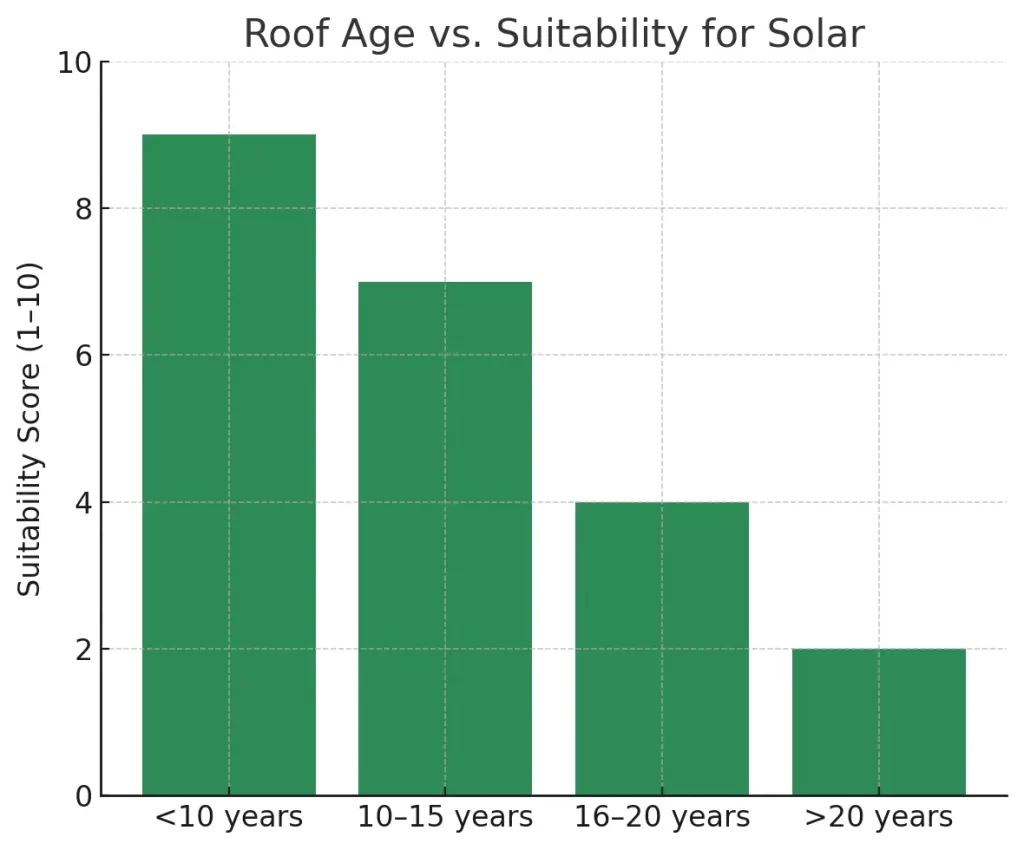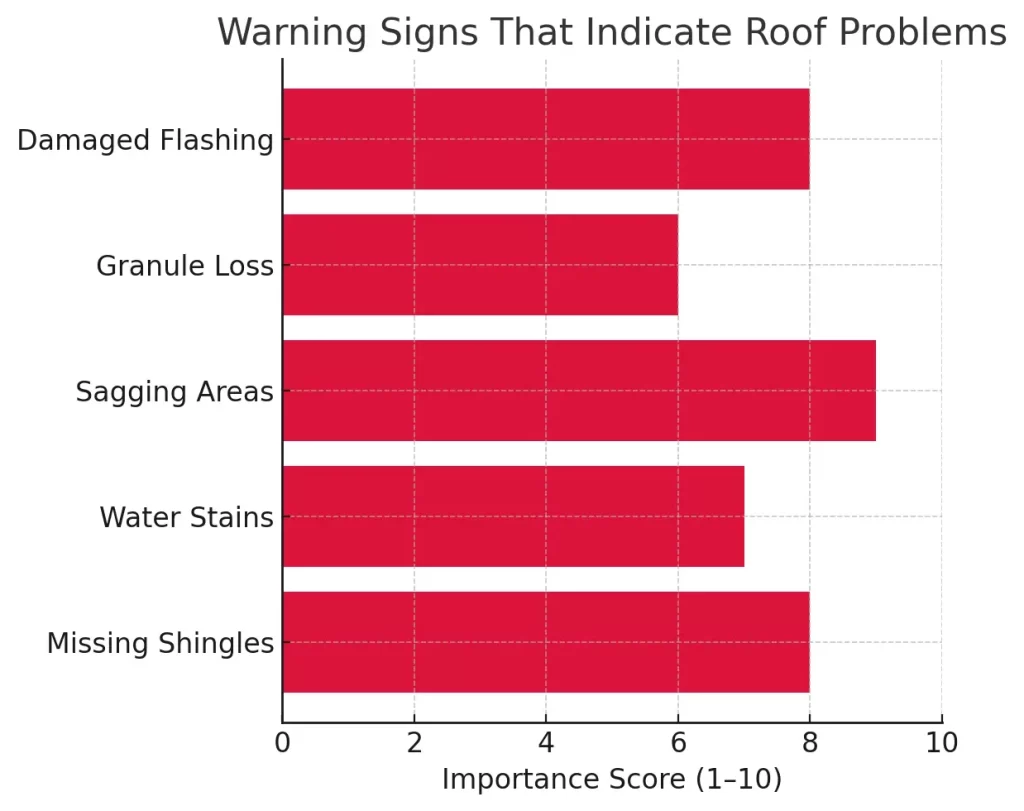
Before you go solar, don’t skip the most important step: checking your roof. Installing solar panels without a proper roof evaluation is like building a house on shaky ground. Partnering with a trusted contractor like Midwest Roofing, Siding & Windows ensures your roof is strong, safe, and ready to support a solar system for decades to come. A detailed inspection before a solar installation can uncover hidden problems early, protect your investment, and help you avoid costly setbacks down the road, so your switch to clean energy is smooth, smart, and sustainable.
Is My Roof Suitable For Solar Panel Installation?
Not every roof can effectively support solar panels. Several factors determine compatibility, including structural integrity, material type, age, orientation, and local building code regulations for installations.
Age & Material Considerations
Roofs over 15 to 20 years old may need replacement before solar installation. Asphalt shingles, metal, and tile provide various solar mounting options with differing durability and compatibility.
Structural Requirements For Solar Systems
Most solar panels add a weight of between 15 and 20 pounds per square foot to your roof. Your home’s structure must be capable of safely supporting this extra weight, along with wind and snow load considerations.
Common Roof Types & Solar Compatibility
Asphalt shingle roofs are generally suitable for solar installations, while metal roofs provide durability. Clay tiles need specialized hardware, and flat roofs require ballasted systems.

Assessing Your Roof’s Current Condition
A professional roof inspection reveals hidden issues that could complicate solar installation. Early detection prevents costly surprises and protects your investment for years to come.
Warning Signs That Indicate Roof Problems
Missing shingles, water stains, sagging areas, and granule loss suggest issues. Damaged flashing around chimneys and vents risks water infiltration during solar panel installation.
The Hidden Costs Of Skipping A Roof Evaluation
Skipping a roof inspection can cost you far more in the long run. Unexpected damage often leads to emergency repairs, extra removal fees, and lost energy production—expenses that quickly eclipse the price of a proper evaluation.
Why Removing Solar Panels For Roof Repair Is Expensive
Removing solar panels typically costs $3 to $5 per watt, and reinstalling them usually adds another $3 to $5 per watt. Thus, a solar panel system may cost thousands to remove and reinstall.
Timeline Disruptions & Lost Energy Production
Roof repairs can take several weeks to complete, depending on urgency and contractor timelines. During this period, your solar system remains offline, leading to lost energy savings and potentially putting you at risk of violating utility interconnection agreements.
Insurance & Warranty Complications
Insurance claims can become complicated when solar panels are installed on damaged roofs. Warranty coverage may be voided if a proper roof evaluation isn’t conducted before the system’s installation begins.
Timing Your Roof Replacement With Solar Installation
Coordinating roof and solar projects reduces costs and minimizes disruption. Proper timing ensures optimal outcomes while maximizing available tax credits, rebates, and financing options for both projects.

Should I Replace My Roof Before Or After Solar?
Replace aging roofs prior to solar installation to avoid future removal costs. Newer roofs may offer stable platforms for solar systems and prevent potential warranty conflicts between contractors, but it is best to have an inspection first, to be certain..
Coordinating Contractors & Permits
Plan roof work before the solar installation. Ensure the necessary permits for both projects are acquired simultaneously. Ensure clear communication between contractors to prevent scheduling conflicts and material coordination issues.
Red Flags: When To Walk Away From Solar (For Now)
Certain roof conditions render solar installation unwise until repairs are made. Acknowledging these circumstances safeguards your investment and avoids hazardous installations that could harm your home.
Roof Conditions That Make Solar Installation Inadvisable
Extensive water damage, structural sagging, and deteriorating decking require immediate attention. Active leaks must be fixed before any solar installation work begins. To prevent further damage
Temporary vs. Permanent Roof Issues
Minor tasks, such as replacing loose shingles, can be completed relatively swiftly. However, significant structural issues require extensive repairs, potentially delaying solar installation for several months until those problems are resolved.
Creating A Timeline For Future Solar Installation
Establish realistic timelines for roof repairs and solar installation. Consider seasonal weather patterns, contractor availability, and permit processing times to ensure smooth project completion and success.

Working With Professionals: Who To Call & When
Professional evaluations offer precise assessments and in-depth recommendations. Licensed contractors pinpoint issues that untrained individuals may overlook and propose suitable solutions tailored to your specific circumstances and budget.
Solar Installers vs. Roofing Specialists
Solar installers concentrate on energy production and electrical systems, while roofing specialists comprehend structural integrity and weatherproofing. Both viewpoints offer valuable insights for successful projects and installations.
Finding A Qualified Roofing Contractor
Select a licensed and insured contractor with local references and relevant experience. If you are a Twin Cities homeowner, contact Midwest Roofing, Siding & Windows today to secure the expertise required to determine the next steps.